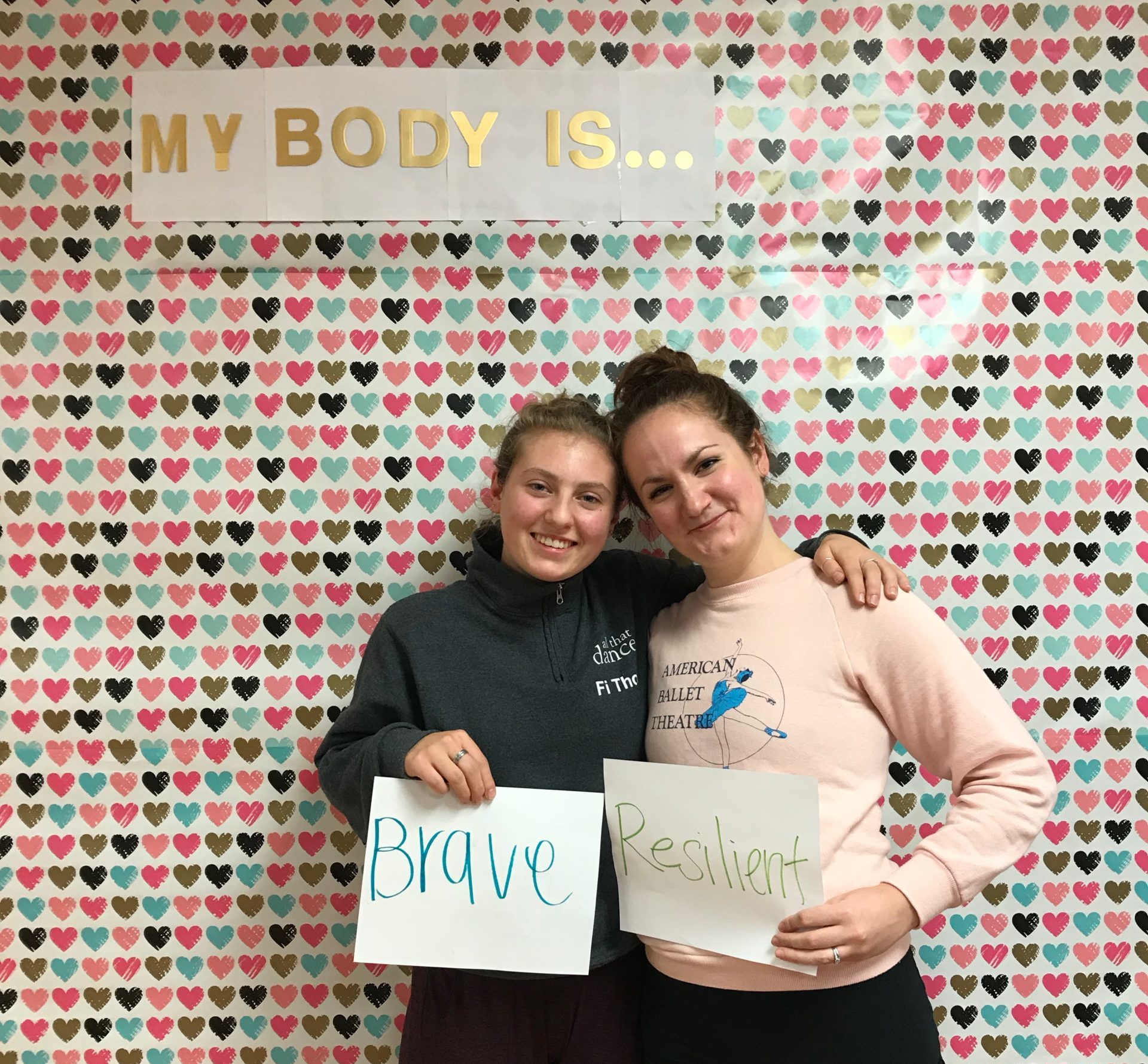
As a dance educator, it breaks my heart when I hear my students talk about how they were discouraged from pursuing ballet or jazz growing up because they didn’t fit the bill for what their teacher deemed an “acceptable” body type.
The truth is, the words and opinions of dance teachers matter to their students. It can even make or break the relationship dancers have with their bodies when it comes to doing something they love so much. That’s why creating a body-positive learning environment that is happy, healthy and safe is essential for supporting a dancer’s development, both mentally and physically, which in turn supports their overall performance and longevity in dance.
Although many dance teachers want to advocate for body positivity in the studio, it can be difficult to know where to start. To gain some helpful insights, I spoke with Katrena Cohea, CEO of Different Drummer Dance, Mary Pisegna Gorder, Ballet Department Lead at All That Dance and a Chapter Sponsor for National Honor Society for Dance Arts, and Alexandra Salerno, a licensed professional counselor.
1. Reflect on Your Own Body-Image Struggles
As dance teachers, it can be sometimes hard to notice our blind spots or admit we struggle with body image ourselves. However, doing the internal work of healing our relationship with our bodies first and foremost is pivotal in creating an example for our students to be more accepting of themselves.
Watch your language around your own bodies. Cohea points out, “If you’re constantly talking about your stomach and poking your tummy, what does that communicate to your students?” From time to time, you may recollect painful memories of hurtful comments, trauma or abuse. Cohea further suggests, “Be patient and gracious with yourself as you’re doing that reflection because it’s not always a fun reflection.” Try approaching this reflection process with curiosity, and don’t hesitate to ask for help or support from trusted peers, professional therapists or psychologists.
2. Normalize Body-Related Conversations All Year Round
Be intentional about having conversations about body image throughout the year. If you’re a studio owner or company director, begin by talking about body positivity and mental health with your staff. Gorder initiates conversations right off the bat while interviewing potential hires by asking them, “What kind of a priority is body positivity or body neutrality for you as a dance teacher? Are you open to shifting how you talk or think about bodies if it’s something you haven’t thought about before?” Cultivate open communication by discussing these topics during staff development and student programming.
3. Allow Your Dancers to Feel (and Avoid Trying to Fix)
If you notice a student feeling frustrated or making negative comments about their body, validate their feelings by listening and responding with empathy. “Instead of glossing over it or avoiding it because we’re uncomfortable, or telling a student to just push through or keep their chin up, actually listen to your dancers and reflect back what they’re hearing or seeing,” Cohea says.
Try phrases like:
- “I see you’re frustrated today.”
- “You’re right, this is a challenging day!”
- “Yeah, it’s rough. I’m sorry you’re going through this.”
- “I’m here with you. How can I help?”
Cohea also reminds us that “reflecting on what you say can help dancers know you understand what they’re going through and can help build trust and respect.”

4. Change How You Utilize the Dance Space
Rather than facing the mirror for every class or rehearsal, Salerno recommends trying to reorient the front (or downstage) on occasion to challenge your students. “Not only does that allow for the dancers to be able to really be in their body and in the moment, it also gives the dancers a mental challenge because you’re working to change the spatial direction,” she says. Decreasing the use of the mirror can help students better understand how a movement feels in their bodies rather than focusing solely on how it looks.
5. Encourage Body Kindness
It’s unrealistic to think we’re going to feel great about our bodies all the time, so neither should we expect that of our students. Normalize that there will be days we may not feel positively towards our bodies. Instead of forcing body positivity, Cohea encourages body kindness. “Body kindness is rooted in the belief that even on those hard days, our bodies are deserving of respect, and that our values are not dependent on how our bodies look or perform,” she says. This means “being kind to your body in every possible way: from the way you eat to the rest that you get, and how you speak about your body, how you treat your body with respect and use respectful words.” For example, instead of saying “I can’t jump,” try saying “My legs are jumping to the best of their ability today.” Kindness towards yourself and others goes a long way—always.
6. Host a “Love Your Body Week” at Your School or Studio
Started by Rachel Stewart in 2005 at All That Dance, Love Your Body Week has since expanded into a national campaign to encourage body positivity for dancers of all ages. As a Chapter Sponsor for the National Honor Society for Dance Arts, Gorder empowers teens who are members of the National Honor Society to facilitate Love Your Body Week activities for younger dancers and their peers. This leadership program allows high-school–aged dancers to gain a deeper connection to the important message of body positivity and teaches all students to build self-confidence.
Additional Resources
Here are some suggestions from Cohea, Gorer and Salerno:
Book: More Than a Body, by Dr. Lexie Kiteand Dr. Lindsay Kite
Dancer mental health: Minding the Gap
Dancer wellness workshops: Different Drummer Dance
Professional counseling: Alexandra Salerno
Podcast: Dance Well Podcast
National Eating Disorder Association: Toolkit for Coaches and Trainers
National Honor Society for Dance Arts: Love Your Body Week





